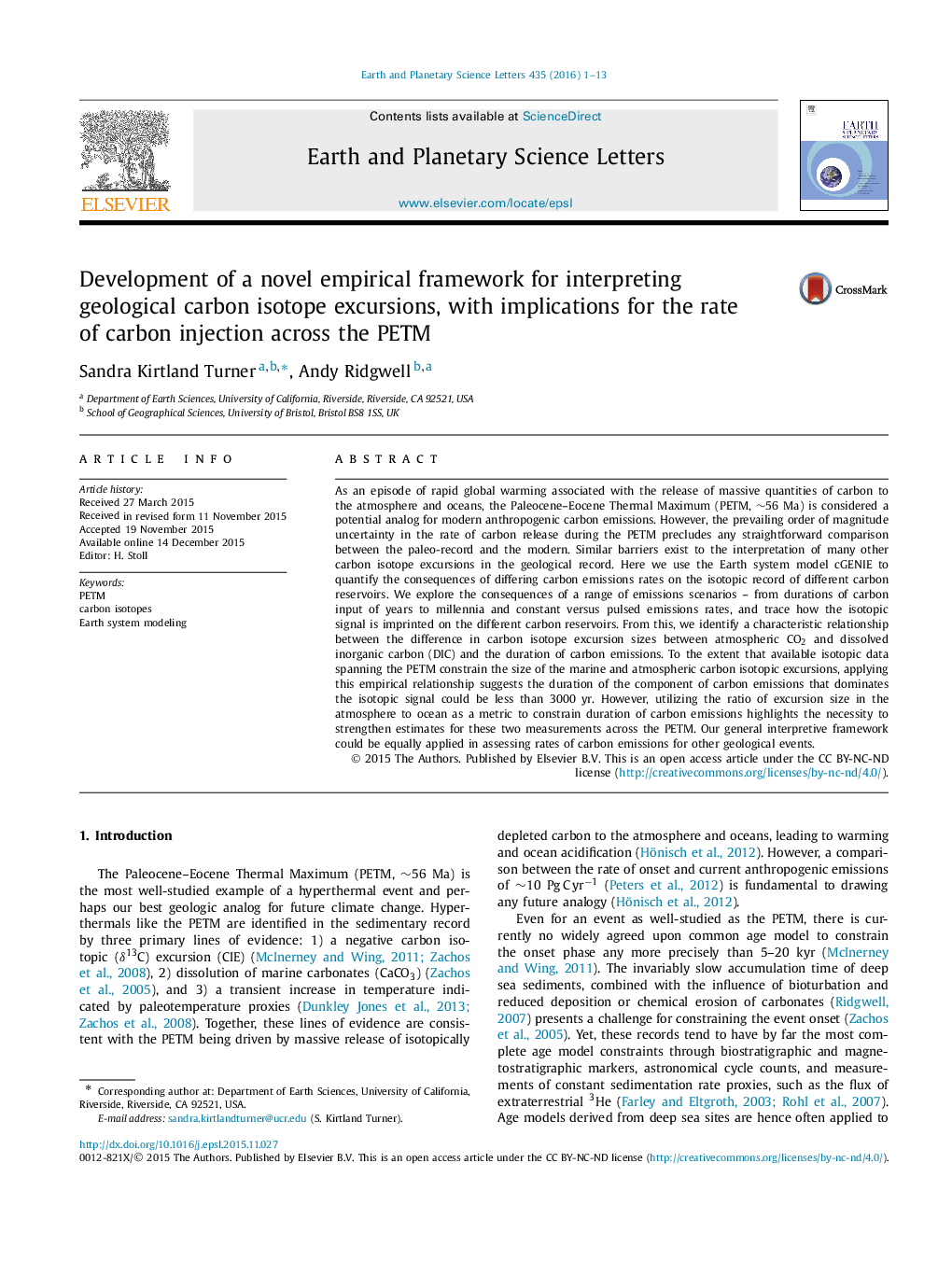| Article ID | Journal | Published Year | Pages | File Type |
|---|---|---|---|---|
| 6427631 | Earth and Planetary Science Letters | 2016 | 13 Pages |
â¢cGENIE Earth system modeling of abrupt carbon release.â¢New empirical relationship suggests PETM carbon release could be less than 3000 yr.â¢Bomb radiocarbon poor analogy for past δ13C excursions.â¢Framework for interpreting rates of geological δ13C excursions.
As an episode of rapid global warming associated with the release of massive quantities of carbon to the atmosphere and oceans, the Paleocene-Eocene Thermal Maximum (PETM, â¼56 Ma) is considered a potential analog for modern anthropogenic carbon emissions. However, the prevailing order of magnitude uncertainty in the rate of carbon release during the PETM precludes any straightforward comparison between the paleo-record and the modern. Similar barriers exist to the interpretation of many other carbon isotope excursions in the geological record. Here we use the Earth system model cGENIE to quantify the consequences of differing carbon emissions rates on the isotopic record of different carbon reservoirs. We explore the consequences of a range of emissions scenarios - from durations of carbon input of years to millennia and constant versus pulsed emissions rates, and trace how the isotopic signal is imprinted on the different carbon reservoirs. From this, we identify a characteristic relationship between the difference in carbon isotope excursion sizes between atmospheric CO2 and dissolved inorganic carbon (DIC) and the duration of carbon emissions. To the extent that available isotopic data spanning the PETM constrain the size of the marine and atmospheric carbon isotopic excursions, applying this empirical relationship suggests the duration of the component of carbon emissions that dominates the isotopic signal could be less than 3000 yr. However, utilizing the ratio of excursion size in the atmosphere to ocean as a metric to constrain duration of carbon emissions highlights the necessity to strengthen estimates for these two measurements across the PETM. Our general interpretive framework could be equally applied in assessing rates of carbon emissions for other geological events.
